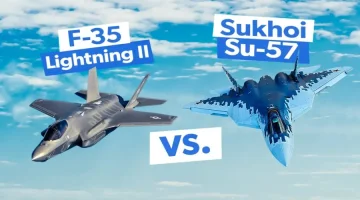- Views: 6K
- Replies: 53
The Indian Air Force's (IAF) ambitious plan to acquire 114 advanced fighter jets under the Medium Role Fighter Aircraft (MRFA) tender is facing a significant cost hurdle. A key element of the tender is the "Make in India" initiative, requiring substantial local production of the chosen aircraft.
However, this mandate is projected to add a hefty $2.2-3.4 billion to the program's cost, effectively increasing the price of each jet by $20-30 million compared to buying them directly from the original equipment manufacturers (OEMs).
The MRFA tender has attracted proposals for six advanced fighter jets, including twin-engine contenders like the Boeing F/A-18E/F Super Hornet Block III, Eurofighter Typhoon, Russian MiG-35, and Dassault Rafale, as well as single-engine options like the Lockheed Martin F-16 Block V (F-21) and Saab Gripen-E. While each offers cutting-edge capabilities, the costs associated with establishing local production lines in India are substantial.
Several factors contribute to this cost increase. Building a dedicated assembly line in India requires significant upfront investment in facilities for component manufacturing, assembly, testing, and maintenance. Importing specialized equipment and machinery from the OEM further adds to the cost. Training local personnel to meet the stringent standards and precision required for fighter jet production involves considerable time and expense.
The initial production phase is also expected to be costly, with a slow ramp-up period as Indian facilities and personnel gain experience with new processes and technologies. The IAF likely won't see cost benefits from local production until the later stages of the program.
Adding to the cost challenge is the potential expense of technology transfer agreements. Each OEM would need to share key technologies for the IAF to maintain and operate the jets domestically, and these agreements often come with premium pricing.
These cost projections raise serious questions about the viability of the "Make in India" component of the MRFA program. While the initiative aims to boost domestic manufacturing and reduce reliance on foreign suppliers, the significant cost increase associated with local production might force the IAF and the Ministry of Defence to re-evaluate their strategy.
Despite these challenges, the IAF remains committed to the MRFA program, recognizing its importance for maintaining India's air combat capabilities. While acknowledging the higher costs associated with local production, the IAF emphasizes the long-term benefits of developing a robust domestic defence manufacturing ecosystem, which could lead to cost savings in future projects as expertise and infrastructure develop.



